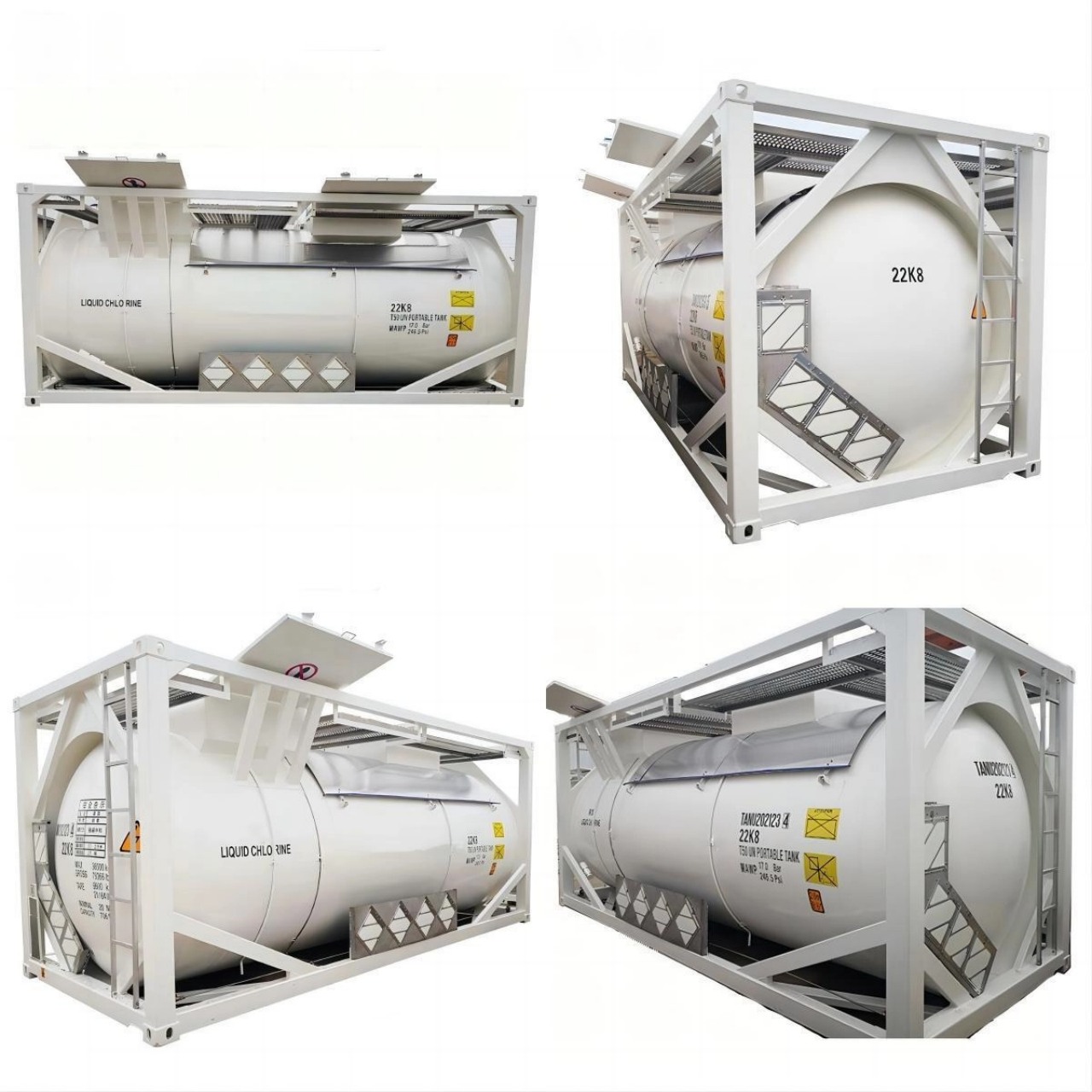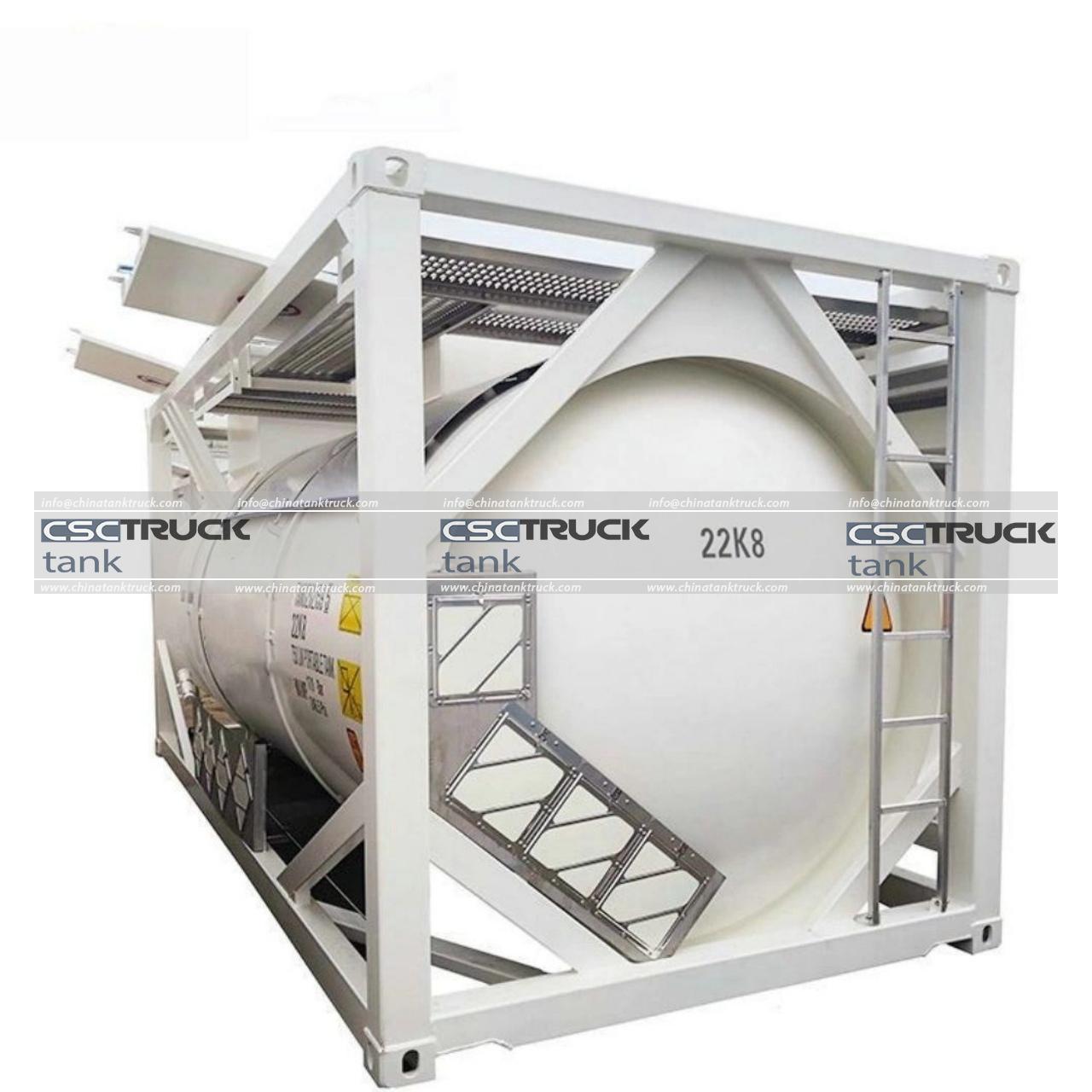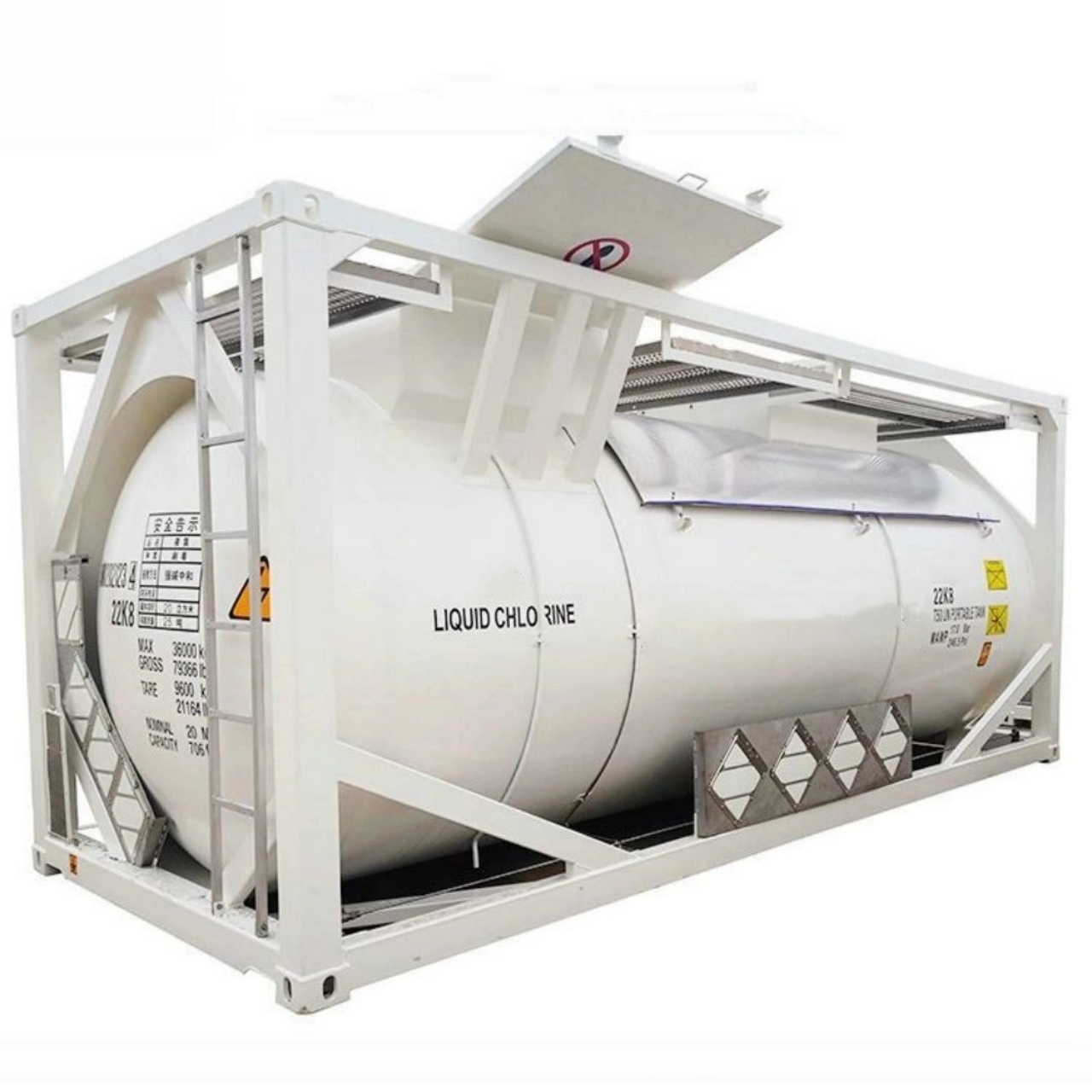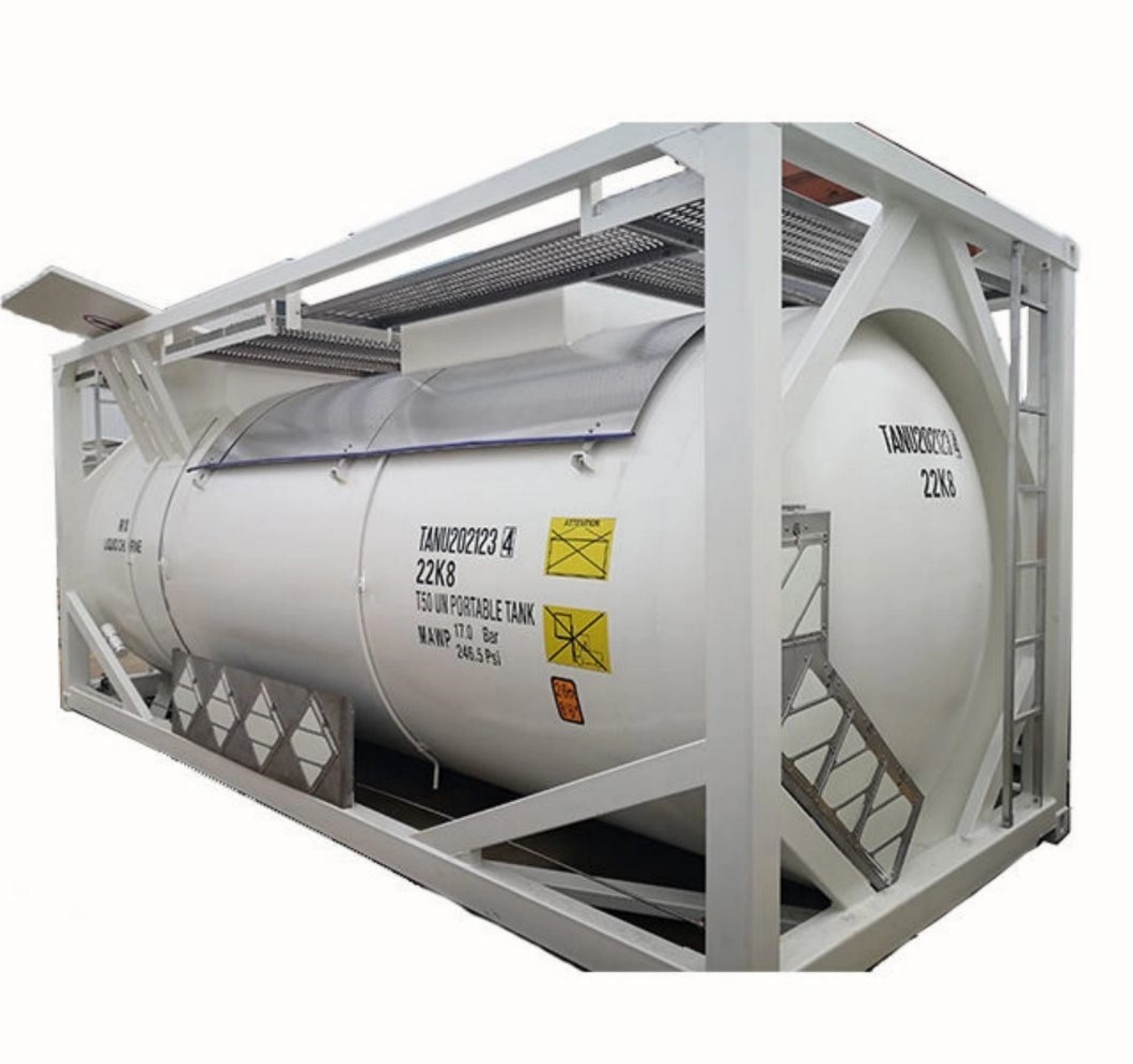ISO tanks are a critical component of global logistics, particularly for transporting bulk liquids and gases safely and efficiently across countries and continents. These tank containers are built according to the International Organization for Standardization (ISO) standards, ensuring compatibility with global intermodal transport systems—ships, rail, and trucks. Among the various types and sizes, the 20-foot ISO tank is the most commonly used. This article will explore the volume of a 20ft ISO tank, the factors that influence its capacity, the types of products it carries, and how volume plays a crucial role in logistics planning.
Understanding ISO Tanks
An ISO tank, or ISO tank container, is a stainless-steel pressure vessel encased in a steel frame. This design allows the tank to fit into standard shipping container slots and be transported just like a dry cargo container. These tanks are used for transporting both hazardous and non-hazardous liquids, including chemicals, oils, food-grade products, and liquefied gases.
The ISO tank’s frame adheres to the standard dimensions of ISO containers, with the most common size being the 20-foot length. The tank itself is cylindrical and mounted within this frame.
Standard Dimensions of a 20ft ISO Tank
Before delving into volume, it’s important to understand the physical dimensions of a 20ft ISO tank. While there may be minor variations among manufacturers and models, the standard dimensions generally fall within this range:
- Length: 20 feet (6.058 meters)
- Width: 8 feet (2.438 meters)
- Height: 8 feet 6 inches (2.591 meters)
The tank’s actual internal cylinder does not fill the entire volume of the container frame due to its rounded shape and the supporting framework. That’s why the internal volume must be calculated separately from external dimensions.
Volume of a 20ft ISO Tank
The volume of a 20ft ISO tank refers to the internal capacity of the cylindrical tank within the container frame. This is measured in liters, gallons, or cubic meters, depending on the context. The average capacity of a standard 20ft ISO tank typically ranges between:
- Capacity: 21,000 to 26,000 liters
- In cubic meters: 21 to 26 m³
- In US gallons: 5,547 to 6,869 gallons
Some specially designed ISO tanks may hold up to 27,000 liters or more, depending on their intended use and the allowable gross weight.
Example:
A common type of 20ft ISO tank used in chemical transport might have the following specs:
- Capacity: 24,000 liters (24 m³)
- Tare weight: 3,800 kg
- Maximum gross weight: 36,000 kg
- Payload capacity: 32,200 kg
The variation in volume depends on several key factors, which are detailed below.
Factors Affecting ISO Tank Volume
While the frame size of a 20ft tank container is fixed by ISO standards, the volume of the internal tank can vary. Several factors contribute to this variation:
1. Wall Thickness and Insulation
Tanks transporting cryogenic or food-grade products may have thicker insulation layers to maintain temperature. This insulation reduces the internal volume slightly.
2. Tank Shape and Design
The internal tank is cylindrical with hemispherical ends. However, the diameter and wall curvature can vary slightly, impacting total volume.
3. Product Type
Tanks used for transporting dangerous goods may have thicker shells for safety and pressure containment, again slightly reducing internal volume.
4. Tank Type
There are different types of ISO tanks for different cargo types. For instance:
- Standard ISO Tank: For general liquids like chemicals.
- Food-Grade ISO Tank: For edible products; includes special linings.
- Reefer Tank (Insulated/Heated): For temperature-sensitive cargo.
- Gas Tank (T50/T75): For liquefied gases, often at high pressure or cryogenic temperatures.
Each type has slightly different dimensions and volume capacities, even if the frame is the same 20-foot size.
Why Volume Matters
Understanding the volume of a 20ft ISO tank is vital for many logistical and operational reasons:
1. Efficient Load Planning
Knowing the tank’s capacity allows shippers to optimize the amount of product transported, ensuring that weight and volume limits are adhered to without underfilling or overloading.
2. Cost Management
Shipping costs are often calculated based on weight and volume. By accurately knowing the tank’s volume, shippers can manage costs more effectively and avoid penalties.
3. Safety and Compliance
Regulations for transporting chemicals, food, and gases often mandate specific fill levels. For example, dangerous goods may require a minimum “ullage” (space) for thermal expansion.
4. Compatibility with Infrastructure
Ports, trucks, and rail systems are designed to handle standard container sizes and weights. A standard 20ft ISO tank ensures compatibility while providing maximum usable volume.
Ullage and Filling Limits
It’s important to note that even if a tank has a theoretical capacity of 24,000 liters, it is not always filled to 100%. The term ullage refers to the space left at the top of the tank to allow for product expansion due to temperature changes. This is especially important for volatile substances and liquids that expand significantly with temperature.
A standard fill ratio might be:
- 95% fill for most liquids
- 80–85% fill for hazardous chemicals
Thus, the usable volume can be slightly less than the tank’s total volume.
Practical Applications
20ft ISO tanks are used to transport a wide array of products, and knowing the volume helps determine the correct tank for the job:
- Chemicals: Acids, solvents, industrial liquids
- Food-grade cargo: Wine, juice, edible oils
- Gases: Propane, ammonia, LNG
- Pharmaceutical liquids: Under sterile conditions
A company transporting wine from France to the U.S., for instance, may opt for a 24,000-liter food-grade ISO tank, which replaces more than 30 standard barrels, reducing logistics costs significantly.
Conclusion
The volume of a 20ft ISO tank generally ranges from 21,000 to 26,000 liters, with 24,000 liters being a typical capacity. While the tank’s external frame remains standardized at 20 feet in length, the internal capacity can vary depending on tank design, insulation, wall thickness, and intended use. Understanding this volume is crucial for transport efficiency, safety compliance, and cost-effectiveness in global trade.
Whether you are moving wine across oceans or chemicals across borders, the humble 20ft ISO tank offers a versatile and reliable solution—its true value lying in its well-engineered balance of size, strength, and capacity.






